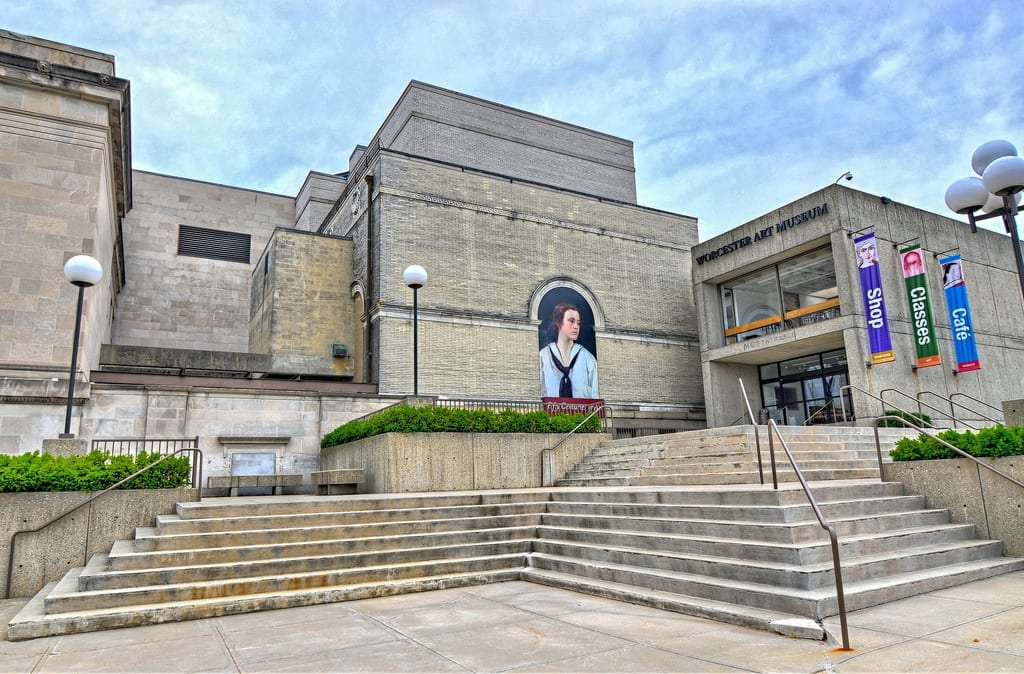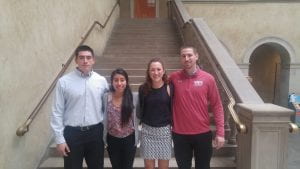Contents
Welcome to our page!
During our interactive qualifying project we worked with the Worcester Art Museum to create interactive activities for an upcoming exhibit Reusable Universes by Shih Chieh Huang.
Our Project Center: The WAM:
 The Worcester Art Museum’s (WAM) purpose is to provide the community with formal and informal experiences with a wide range of educational and experiential programs. As a public, non-profit organization, the WAM is funded through their Business Partner Program, which includes sponsors such as Unum, AbbVie, Fallon Health, People’s United Bank, Rand-Whitney Container, Tufts Health Plan, and many more. There are also donors and members who contribute to WAM. It was founded in 1898 and since then has expanded its collection of paintings, sculptures, decorative arts to better serve Worcester and the broader regions nearby. There are other independent organizations in the Worcester community that have a similar goal statement, but do not directly compete with WAM such as the Worcester History Museum and EcoTarium. The WAM is hosting the upcoming exhibit, Reusable Universes, by the artist Shih Chieh Huang. Our sponsoring organization is structured in a way that there are multiple important divisions of leaders within its employees, but the sections that are specifically relevant to our project are the interactive art exhibitions.
The Worcester Art Museum’s (WAM) purpose is to provide the community with formal and informal experiences with a wide range of educational and experiential programs. As a public, non-profit organization, the WAM is funded through their Business Partner Program, which includes sponsors such as Unum, AbbVie, Fallon Health, People’s United Bank, Rand-Whitney Container, Tufts Health Plan, and many more. There are also donors and members who contribute to WAM. It was founded in 1898 and since then has expanded its collection of paintings, sculptures, decorative arts to better serve Worcester and the broader regions nearby. There are other independent organizations in the Worcester community that have a similar goal statement, but do not directly compete with WAM such as the Worcester History Museum and EcoTarium. The WAM is hosting the upcoming exhibit, Reusable Universes, by the artist Shih Chieh Huang. Our sponsoring organization is structured in a way that there are multiple important divisions of leaders within its employees, but the sections that are specifically relevant to our project are the interactive art exhibitions.

Student Researchers:
The student researchers who participated in this project are Nick Borsari, Matt Howard, Ann Kaczowka, and Jasmine Higuera.
Project Goal and Objectives:
The goal of this project was to provide the Worcester Art Museum with recommendations for interactive activities to accompany the art exhibit of the artist, Shih Chieh Huang. His exhibit aimed to recapture the curiosity and wonder of early technology that can inspire visitors to experiment. Thus, we designed and created interactive activities that allowed visitors to see how discarded items could be reused to make works of art among other things.
Our measurable objectives were:
- Identified useful and appropriate interactive art activities that entertained and engaged different age groups;
- Identified methods to inspire curiosity in the visitors about Reusable Universes;
- Identified methods to stimulate creativity about the various ways everyday objects can be used;
- Identified a way for museums to determine the success of activities.
